Air travel is critical in today's interconnected world for stimulating economic growth, enabling commerce, and connecting people across continents. Bilateral flying rights, also known as air traffic rights or air transport agreements, play an important role in regulating the number of flights and seat capacity available between nations.
The Importance of Bilateral Flying Rights
Bilateral flying rights provide the basis for international air services, allowing carriers to conduct scheduled flights between two nations. These agreements specify the number of flights, seat capacity, and landing rights provided to each country's carriers. Bilateral agreements that regulate air traffic enable fair competition, boost economic progress, and improve global connectivity.
Seat Capacity of Emirates Airlines in India
Despite India's impressive economic growth, Emirates Airline has not raised its passenger capacity in the nation since 2015. Given the increasing demand for travel between India and Dubai, this is a major worry for the airline. Emirates, as one of the world's top airlines, aspires to address the demands of customers while also supporting the two countries' thriving commercial connections. Emirates can operate 65,000 seats from Dubai to India in each direction every week.
India's Economic Growth
In recent years, India's economy has grown rapidly, making it one of the world's fastest-growing major economies. The country's expanding middle class, booming trade, and increasing tourism have all led to an upsurge in air travel demand. As the Indian economy develops, airlines must adapt and provide enough air transport services to meet the needs of this expanding market.
The Government's Stance on Bilateral Flying Privileges
Despite India's economic success, the government has been wary of granting multinational carriers further bilateral flying privileges. This strategy attempts to safeguard the local aviation sector while also encouraging the expansion of Indian airlines. While this strategy benefits domestic airlines, it may limit the development potential of international carriers such as Emirates, affecting their capacity to satisfy customer demand effectively.
Challenges Faced by Emirates
Due to restricted bilateral flying privileges in India, Emirates Airline confronts a number of obstacles. The airline's current seat capacity limits limit its potential to expand operations and provide additional flights to Indian passengers. As a result, Emirates may lose market share to competitors who have received larger seat capacities and better agreements.
The Importance of Increasing Bilateral Flying Rights
There is an urgent need for enhanced bilateral flying rights between India and Dubai to solve the issues encountered by Emirates Airline and other international carriers. Both nations can unlock the full potential of their air transport sectors, handle rising passenger demand, and drive economic growth by providing extra seat capacity. This would assist not just airlines but also tourism, commerce, and commercial relationships between India and Dubai.
Benefits of Increased Bilateral Flying Rights
Increased bilateral flying privileges would benefit both countries in a variety of ways. It would improve connectivity, allowing more people to travel for work or pleasure. A better air transport network would boost trade by allowing for faster movement of goods and services. Furthermore, increasing flights would offer more employment opportunities, assist local companies, and contribute to India's and Dubai's overall economic development.
Impact on Tourism and Trade
Tourism and trade are critical components of India's economic ties with Dubai. By increasing bilateral flying rights, more Indian visitors would be able to visit Dubai's numerous attractions, contributing to the expansion of the tourism industry. Simultaneously, Indian enterprises would have improved access to global markets, encouraging exports and imports and improving bilateral economic connections.
Overcoming Regulatory Hurdles
Stakeholders must resolve regulatory hurdles in order to improve bilateral flying rights. Open and productive conversations between the governments of India and Dubai, as well as industry experts and airlines, can help resolve these issues. By encouraging collaboration and understanding, both sides may work towards building a mutually advantageous air transport agreement that fosters airline expansion while also respecting the interests of the domestic aviation industry.
Conclusion
Increased bilateral flying rights between India and Dubai are critical for satisfying rising air travel demand and promoting economic growth. The proposal for increased seat capacity by Emirates Airline is consistent with the changing dynamics of the Indian market. By extending these benefits, both nations may open up new avenues for commerce, tourism, and commercial engagement. It is critical that parties participate in constructive discourse and strive towards the establishment of a mutually advantageous air transport agreement that allows for increased connectivity and economic growth.
Read next
Boeing Discovers New Issues with 787 Deliveries While Revealing Information on the Increased Weight of 787-8 and 787-10
Abhishek Nayar
07 Jun 2023
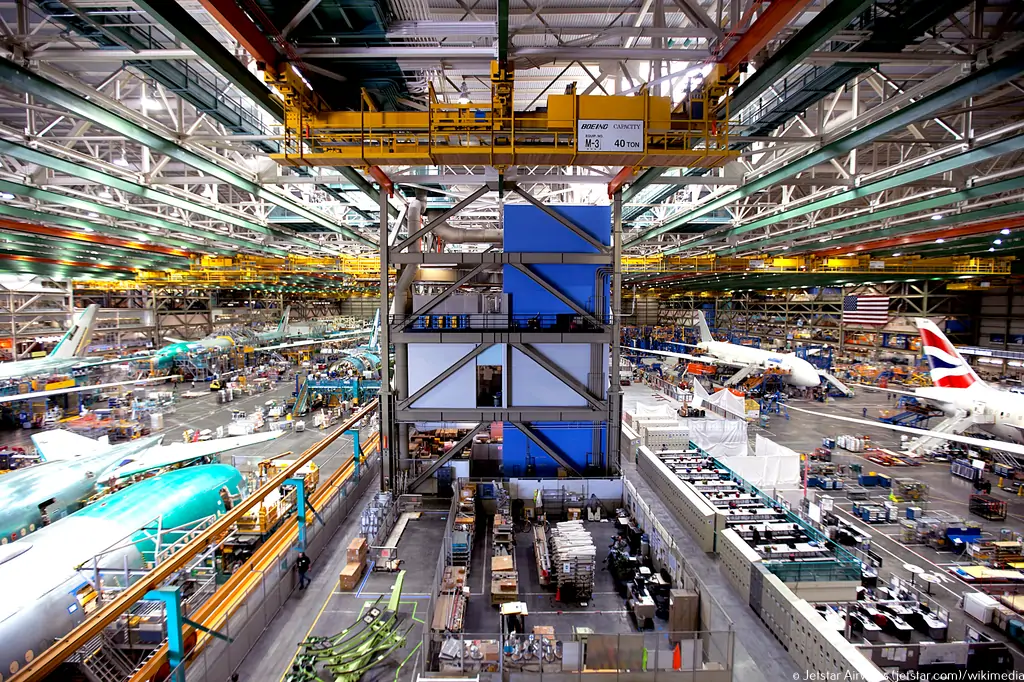
Continuous innovation is required in the dynamic world of aviation to fulfil the ever-evolving requirements of airlines and passengers. Boeing, one of the world's premier aircraft manufacturers, has presented an innovative concept to improve the capabilities of its famous 787 Dreamliner series. The concept involves increasing the aircraft's gross weight, allowing for additional capacity and improved performance.
The History of Boeing's 787 Dreamliner
The Boeing 787 Dreamliner is a cutting-edge aircraft noted for its superior technology, reduced fuel consumption, and passenger comfort. Because of its long-range capabilities and revolutionary design, the Dreamliner has acquired substantial appeal among airlines worldwide since its launch. It has transformed air travel by improving passenger experiences while lowering airline operational expenses.
Boeing's Proposal for Increased Gross Weight (IGW)
In 2019, Boeing approached prominent airlines, including Qantas and Air New Zealand, with an appealing proposition: the notion of a 787 Dreamliner with increased gross weight (IGW). This idea aims to increase the aircraft's carrying capacity and broaden its capabilities. Boeing intended to add 4.6 metric tons of capacity to the 787-9 type and 6.4 metric tons to the larger 787-10 variant, according to Darren Hulst, vice president of Commercial Marketing. This increase in maximum take-off weight (MTOW) would add 12,000 pounds (5443 kilograms) to the largest 787. Boeing indicated that 787 manufacturing will expand to four per month, with a potential increase to five per month by the end of 2023.
Advantages of Increasing Capacity
The introduction of the 787 Dreamliner IGW variant provides various benefits to both carriers and passengers. For starters, additional capacity allows airlines to transport additional passengers or cargo on every flight, increasing revenue possibilities. The greater weight-carrying capability provides airlines with fresh chances to extend their route networks and meet rising demand.
Boeing 787 Dreamliners: Delay in Delivery
Newly Discovered Manufacturing Issue
Boeing officially disclosed the existence of a production issue that might delay the delivery of around 100 Boeing 787 Dreamliners. While the specifics of the problem have not been made public, it has caused widespread alarm in the aviation world.
Stabilizer Problem
The discovered issue is inside the aircraft's stabilizer, which is critical to maintaining the airplane's balance and stability during flight. The impacted component in manufacturing is produced by a supplier rather than Boeing. However, the firm stated that the attachment fitting is installed on the horizontal stabilizer of the Dreamliner at a Boeing plant in Salt Lake City, Utah. The horizontal stabilizer, which is critical to the aircraft's aerodynamic balance, is placed at the back of the plane, immediately beneath the tail. Because the stabilizer is a crucial component that assures safe and smooth operations, any issues must be addressed quickly and effectively.
Boeing's Response and Commitment to Repair
Boeing, as a responsible aircraft manufacturer, has taken quick measures to rectify the stabilizer problem. Customers and regulatory authorities have been guaranteed that all impacted aircraft will be thoroughly repaired before delivery. This promise indicates Boeing's commitment to maintaining the industry's highest safety standards.
Regulatory Involvement and Safety Precautions
The Federal Aviation Administration (FAA), as well as other important regulatory authorities, were swiftly alerted to the Boeing 787 Dreamliner production issue. The FAA is critical to maintaining commercial aircraft safety and airworthiness. Before permitting the impacted aircraft to return to service, they will closely monitor Boeing's repair procedure and ensure that all essential steps are followed to remedy the issue.
The Challenges and Uncertainties of the Arrival of Enhanced 787s
Although the notion of an increased gross weight on the 787 Dreamliner looks promising, there are a number of problems and unknowns that must be handled. One of the main worries is that more technical and structural adjustments will be required to support the increased weight. Boeing's engineering team must guarantee that the structural integrity, performance, and safety standards of the aircraft are not jeopardized in any manner.
The Impact on Airlines and Passengers
The impact on airlines and customers will be considerable if the upgraded 787 Dreamliners become a reality. Airlines will be able to optimize their operations by taking advantage of the improved capacity and range capabilities of the aircraft. This can result in increased profitability and client happiness.
Conclusion
Boeing's proposal for increasing the 787 Dreamliner's gross weight is a good step in the aviation sector. The ability to increase the aircraft's capacity and range opens up new opportunities for airlines and customers alike. However, the difficulties and uncertainties connected with putting this notion into action should not be disregarded. While the aviation industry waits for future adaptations, the launch of improved 787s might change air travel by enabling more efficient, cost-effective, and enjoyable journeys.
The recently discovered production issue with the Boeing 787 Dreamliner stabilizer caused concerns and led to delays in the delivery of approximately 100 aircraft. Boeing has responded immediately to the issue, emphasizing its commitment to safety and customer satisfaction. The engagement of regulatory organisations, such as the FAA, guarantees that the appropriate steps are taken to remedy the problem and assure the airworthiness of the impacted planes. While the situation is definitely difficult, Boeing's attempts to resolve the issue and properly communicate with its consumers will contribute to a happy outcome.
Read next
In a recent address at the IATA AGM, Tim Clark, the President of Emirates, discussed the airline's strategic plans for the future. One of the key highlights of his speech was his intention to bolster Emirates' order book with a substantial number of widebody aircraft.
Emirates' Expansion Plans
Emirates has long been known for its ambitious growth strategy and its commitment to maintaining a young and modern fleet. By adding more widebody aircraft to its order book, the airline aims to further enhance its global connectivity, expand its route network, and cater to the increasing demand for air travel.
The Importance of Widebody Aircraft
Widebody aircraft play a crucial role in the long-haul operations of airlines, providing superior passenger comfort and increased cargo capacity. These aircraft are designed to transport a significant number of passengers across long distances efficiently. With their spacious cabins, widebody aircraft enable airlines like Emirates to offer exceptional in-flight experiences, ensuring passenger satisfaction.
Potential Order
Speaking at the International Air Transport Association (IATA) Annual General Meeting (AGM), the President of Emirates, Tim Clark, confirmed the airline's intentions to strengthen its order book by acquiring additional widebody aircraft. This move reflects Emirates' ambitious expansion plans and recognition of the value of widebody aircraft in its operations. With the possibility of ordering up to 150 widebody aircraft, Emirates is exploring options from both Airbus and Boeing, signaling potential growth opportunities for the airline.
Clark did not disclose any specifics regarding the purchase, such as the aircraft type or whether it would go with Boeing or Airbus, but did say that the airline is considering the Airbus A350, the Boeing 777X, and the 787.
Emirates' Current Fleet
Emirates currently operates one of the largest fleets of widebody aircraft in the world, comprising Airbus A380s and Boeing 777s. The A380, known for its iconic double-decker design, offers unparalleled passenger capacity and comfort. The Boeing 777, on the other hand, is known for its versatility, fuel efficiency, and range.
Factors Influencing Emirates' Order Book
Several reasons contribute to Emirates' intention to increase its order book with more widebody aircraft. Firstly, the predicted post-pandemic rebound in the tourism sector is likely to result in a boom in demand for air travel. Emirates hopes to be well-positioned to cater to this rising demand by extending its fleet capacity.
Implications for the Airline Industry
Emirates' decision to increase its order book has far-reaching implications for the airline industry as a whole. It demonstrates the airline's confidence in the recovery of the travel industry and its commitment to remaining at the forefront of global aviation. Furthermore, a potential order for widebody aircraft would benefit both Airbus and Boeing, giving the aircraft manufacturing sector a much-needed boost.
In conclusion, Emirates' announcement to expand its order book with more widebody aircraft demonstrates the airline's commitment to expansion and its appreciation of the need to invest in contemporary fleet assets. Emirates strives to deliver an exceptional travel experience to its customers while contributing to the global aviation industry's recovery and sustainable future by growing its capacity while maintaining a young and efficient fleet.
With Inputs from AeroTime
Read next
IATA DG Predicts a Net Profit of USD 9.8 billion This Year Reported by The Airline Industry
Radhika Bansal
06 Jun 2023
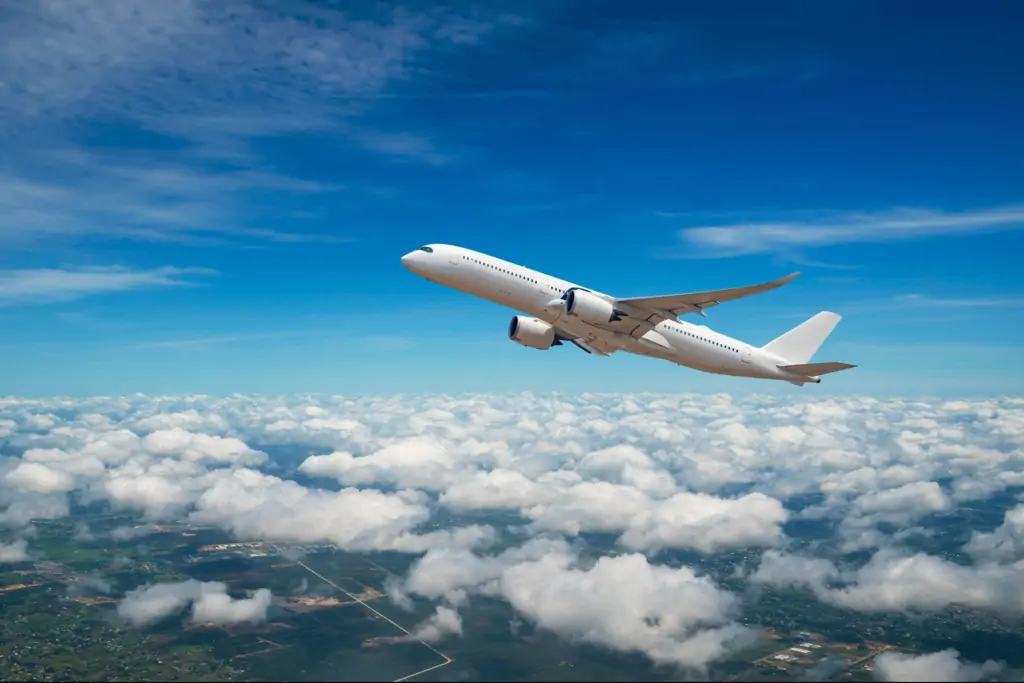
The airline industry is expected to record a net profit of USD 9.8 billion this year as passenger traffic is rising and local economies are reviving, IATA said on Monday, June 5.
Willie Walsh, Director General of the International Air Transport Association (IATA), said that despite economic uncertainties, people are flying to reconnect, explore and do business. "Latest data shows that passenger traffic is at over 90% of 2019 level". Speaking at the IATA Annual General Meeting here, he said airports are busier, hotel occupancy is rising, local economies are reviving and the airline industry has moved into profitability.
The airline industry is expected to rake in revenues of USD 803 billion and a net profit of USD 9.8 billion this year. Airlines will make an average of USD 2.25 per passenger, he said. While the aviation industry is recovering after the pandemic, there are still challenges like cost pressure and supply-chain issues. He also made a strong pitch for having global standards for a Sustainable Aviation Fuel (SAF) book and claim system to help reduce carbon emissions.
While addressing the Annual General Meeting of the International Air Transport Association (IATA) here, Walsh also flagged concerns about supply chain issues that are raising costs and limiting airlines’ ability to deploy aircraft. He also pointed out that decarbonising aviation is a serious issue and governments must not be allowed to use it to shore up exchequer finances.
He noted that airports are busier, hotel occupancy is rising, local economies are reviving and the airline industry has moved into profitability. The airline industry is expected to rake in revenues of USD 803 billion and a net profit of USD 9.8 billion this year. Airlines will make an average of USD 2.25 per passenger, he said.
IATA is a grouping of more than 300 airlines, including various Indian carriers. While the aviation industry is recovering after the pandemic, there are still challenges like cost pressure and supply chain issues. Walsh said Original Equipment Manufacturers (OEMs) have been far too slow in dealing with supply chain blockages that are both raising costs and limiting our ability to deploy aircraft.
Emphasis on More SAF Production
"Airlines are beyond frustrated. A solution must be found," he added. Stressing the need for ways to reduce carbon emissions, Walsh said SAF will be the biggest contributor to net zero success. While noting that there is a need to increase the number of pathways for SAF production and diversify feedstocks while maintaining their sustainability credentials, Walsh said unfortunately, politicians have not made good on their COP 26 promise to stop financing fossil fuels.
"The US approach to SAF is the most advanced with a system of tax credits to drive up production levels. This will be more effective than purchase mandates being considered as far and wide as Singapore, India and Europe. When there is not enough supply, a purchase mandate will drive prices up, stall innovation and limit competition long before supply increases. And if an early policy decision is needed, it is to establish global standards for a SAF book and claim system that can fairly allocate SAF credits with no double counting," he said.
Just as the location makes no difference on the impact of CO2 emissions, Walsh said it has no impact on where SAF is uplifted and used either. "A global approach to book and claim for SAF credits will help facilitate economies of scale in SAF production. And it will avoid the long-distance shipping (or even importation) of SAF, which would only degrade its climate credentials," he pointed out.
According to him, getting the basics of energy transition done is important — production incentives, more diversified production pathways and a book and claim system.
Last month, India said the International Civil Aviation Organization (ICAO) should continue to be guided by "common but differentiated responsibilities" in the efforts to achieve net zero carbon emissions for the aviation sector. India is one of the fastest-growing and third-largest civil aviation markets in the world. "Today's SAF production is less than 0.1% of what we need for net zero. But the trend is positive... every drop of SAF ever produced has been purchased and used. The problem is insufficient production capacity to meet demand," he said.
In 2022, SAF production tripled to 300 million litres and airlines used every single drop costing almost USD 350 million. "With the right supportive policies, reaching 30 billion litres by 2030 is challenging but achievable. That would be about 6% of the 450 billion litres of annual production capacity we need in 2050," he noted.
Read next
Turkish Airlines is embarking on an ambitious plan to substantially expand its fleet, aiming to increase its current fleet number to 813 aircraft by 2033. This previously disclosed proposal received more insights from Prof. Dr. Ahmet Bolat, chairman of the board and executive committee, during the International Air Transport Association (IATA) Annual General Meeting (AGM) in Istanbul.
Turkish Airlines' Ambitious Fleet Expansion
Turkish Airlines, Turkey's national airline, is already a major player in the global aviation industry. The airline has built up a reputation for its extensive network and great services despite its present fleet size and operating capacity. Turkish Airlines, on the other hand, is not resting on its laurels and plans to increase its fleet in order to take its success to new heights.
Update on the Aircraft Order from Prof. Dr. Ahmet Bolat
Prof. Dr. Ahmet Bolat discussed the upcoming aircraft order during the IATA AGM. Despite hopes that an announcement would be made at the IATA AGM or perhaps at the Paris Air Show, Prof. Dr. Ahmet Bolat indicated that Turkish Airlines will postpone the decision for another two months. This decision underscores the company's cautious approach and commitment to making well-informed fleet decisions in the future.
The Importance of the Delay
The decision to postpone the aircraft announcement bears significant weight and demonstrates Turkish Airlines' cautious approach. Taking the time to properly assess the alternatives available is critical for long-term success in the ever-changing aviation business, where technical improvements and market circumstances play vital roles.
Turkish Airlines' Expansion Strategy
Turkish Airlines has continually maintained a growth-oriented strategy focused on boosting international routes and passenger numbers. The airline has effectively established itself as a preferred choice for travellers by delivering a smooth travel experience while maintaining strong service quality standards.
Potential Benefits of the Aircraft Order
Turkish Airlines' large aircraft order has various advantages for the airline, its customers, and the industry as a whole. For starters, the deployment of new aircraft will result in increased operational efficiency and lower operating expenses. Modern aeroplanes are built to be more fuel-efficient, resulting in considerable long-term cost savings for airlines.
Conclusion
Turkish Airlines' aspirations to expand its fleet with a large aircraft purchase demonstrate the company's dedication to expansion and innovation. Prof. Dr. Ahmet Bolat's recent presentation at the IATA AGM highlights the airline's deliberate process in reaching this critical choice. Turkish Airlines intends to delay the announcement for two months in order to properly assess the available possibilities and ensure that the chosen aircraft matches its long-term ambitions.
With Inputs from Aviation Week
Read next
Airlines are continuously looking for methods to improve operational efficiency, reduce fuel consumption, and minimize the ecological impact of today's rapidly expanding aviation industry. Pratt & Whitney, a global aerospace manufacturer, has been at the forefront of developing revolutionary engine technology to overcome these difficulties. Its ground-breaking Geared Turbofan (GTF) engines have received widespread notice and praise for their extraordinary performance and efficiency.
Pratt & Whitney's History
Pratt & Whitney, a Raytheon Technologies business, has a long history in the aviation industry. With over 95 years of expertise, the firm has established itself as a global leader in aviation engine design, production, and servicing. Pratt & Whitney's devotion to invention has resulted in a slew of game-changing innovations that have transformed air travel.
LATAM: Background
LATAM, headquartered in Santiago, Chile, is Latin America's major airline group, having operations in Brazil, Chile, Colombia, Ecuador, and Peru, as well as overseas operations throughout Latin America, Europe, Oceania, the United States, and the Caribbean. LATAM Airlines was the first airline in the Americas to operate the Airbus A320neo. LATAM is currently operating more than 80 V2500-powered Airbus A320ceo and 16 GTF-powered Airbus A320neo family aircraft.
LATAM Airlines Group's Collaboration with Pratt & Whitney
Pratt & Whitney, a Raytheon Technologies business, has announced a novel partnership with LATAM Airlines Group S.A. ("LATAM"). The airline has picked Pratt & Whitney's cutting-edge GTF engines to power additional A320neo family aircraft. This decision expands on LATAM's initial acquisition of over 40 aircraft in 2013, and when combined with the remaining options, the agreement could encompass a total of 146 aircraft. Furthermore, under a long-term EngineWise® Comprehensive Service Agreement, Pratt & Whitney will provide engine maintenance services to LATAM.
The Pratt & Whitney GTF Engine
For the Airbus A320neo family, the Pratt & Whitney GTF™ engine with Collins Aerospace nacelle and accessories provides the highest fuel economy and lowest greenhouse gas emissions. GTF-powered aircraft lower fuel consumption and CO2 emissions by 16% to 20%, NOx emissions by up to 50%, and noise footprint by up to 75%, respectively. GTF engines are certified for operation on 50% SAF and successfully tested on 100% SAF and are ready to enable further carbon footprint reductions, assisting the aviation industry in meeting its goal of net zero emissions by 2050, laying the foundation for even more efficient and sustainable propulsion technologies in the decades ahead, with advancements such as the Pratt & Whitney GTF Advantage engine and beyond.
The Advantages of Pratt & Whitney GTF Engines
Pratt & Whitney's GTF engines have earned a reputation for superior performance and various benefits. When compared to typical engines, these cutting-edge engines provide better fuel economy, lower pollutants, and lower noise levels. The GTF engines' revolutionary design contains a gear system that optimizes engine performance, leading to lower maintenance and operational expenses for airlines. The GTF engine, with its advanced technology and environmentally friendly characteristics, is an excellent fit for LATAM Airlines' dedication to sustainability and operational efficiency.
Pratt & Whitney Engine Maintenance
Pratt & Whitney will also provide LATAM Airlines Group S.A. with full engine maintenance services in addition to the GTF engines. The airline can rely on Pratt & Whitney's expertise to ensure the best performance and longevity of their engines as part of a long-term arrangement. Pratt & Whitney's maintenance services, with a well-established reputation in the aviation sector, will help LATAM's operating efficiency and minimize aircraft downtime.
EngineWise® Comprehensive Service Agreement
LATAM Airlines Group S.A. will benefit from Pratt & Whitney's wide range of services under the EngineWise® Comprehensive Service Agreement. This programme covers a wide range of engine care topics, such as predictive maintenance, engine health monitoring, and even customized fleet management systems. EngineWise® Comprehensive enables airlines to monitor engine performance proactively and avoid unexpected interruptions, resulting in increased operational dependability and cost savings.
Comments
"At LATAM, we are dedicated to not only connecting South America to the rest of the world but also to caring for the environment and lowering our carbon footprint." "We are proud to strengthen our partnership with Pratt & Whitney to power our A320neo family, which will enable us to do so as we expect to grow this fleet to more than 100 aircraft in the coming years," said Roberto Alvo, CEO of LATAM Airlines Group.
"Our relationship with LATAM, including their predecessor LAN Airlines, dates back more than seven decades with the Twin Wasp engine on Douglas DC-3 aircraft," said Rick Deurloo, Pratt & Whitney Commercial Engines president. "GTF engines are already providing exceptional economic and sustainability benefits to LATAM, and we look forward to providing even more value in the coming years."
In conclusion, LATAM Airlines Group S.A.'s selection of Pratt & Whitney GTF engines for their A320neo family aircraft represents a key milestone in the aviation industry. This collaboration demonstrates LATAM's trust in Pratt & Whitney's cutting-edge technology and dedication to excellence. LATAM Airlines intends to deliver a greater flying experience to its passengers by incorporating GTF engines while prioritizing sustainability and operational efficiency.
With Inputs from Pratt & Whitney

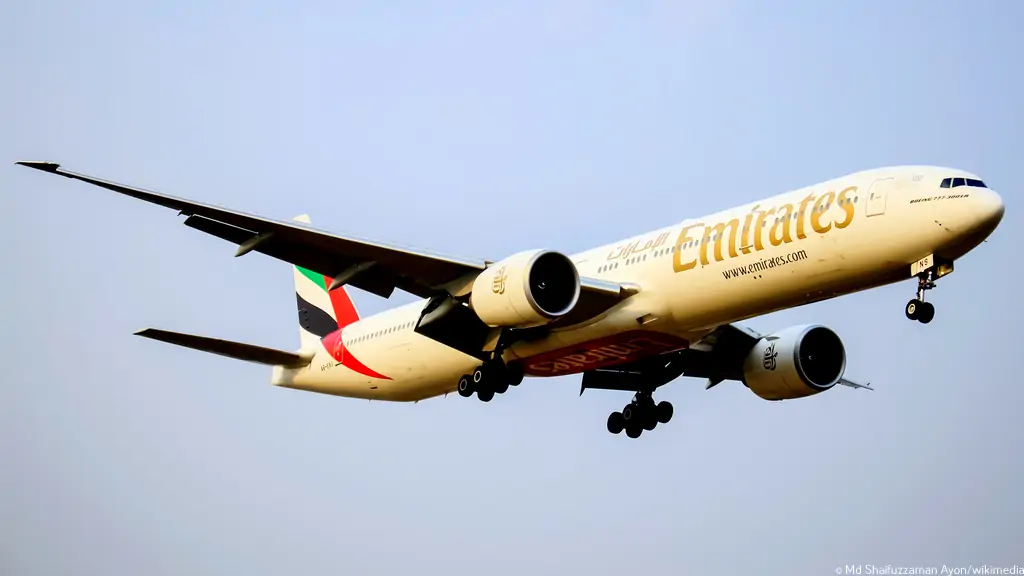
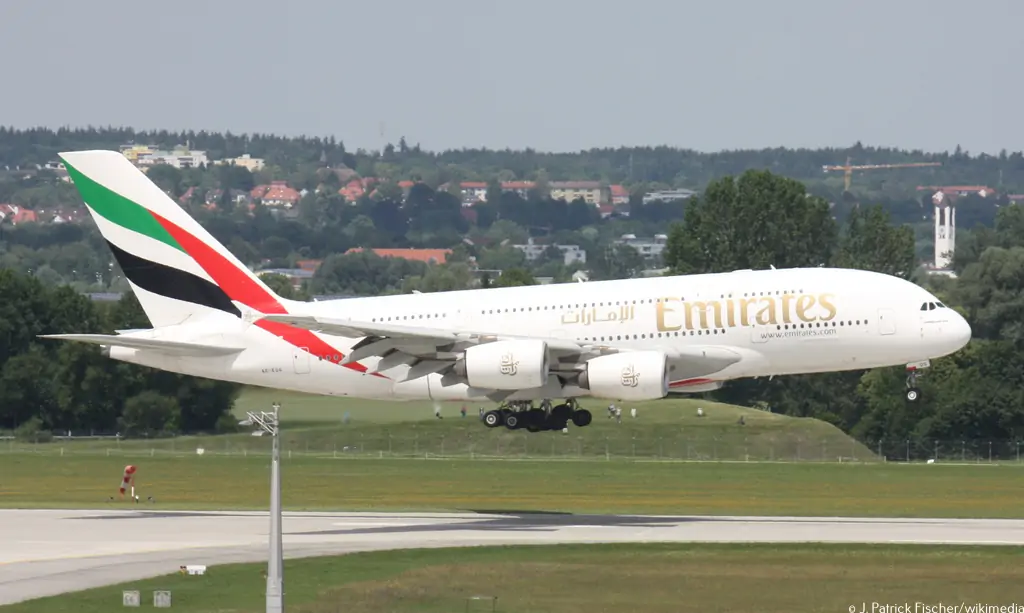


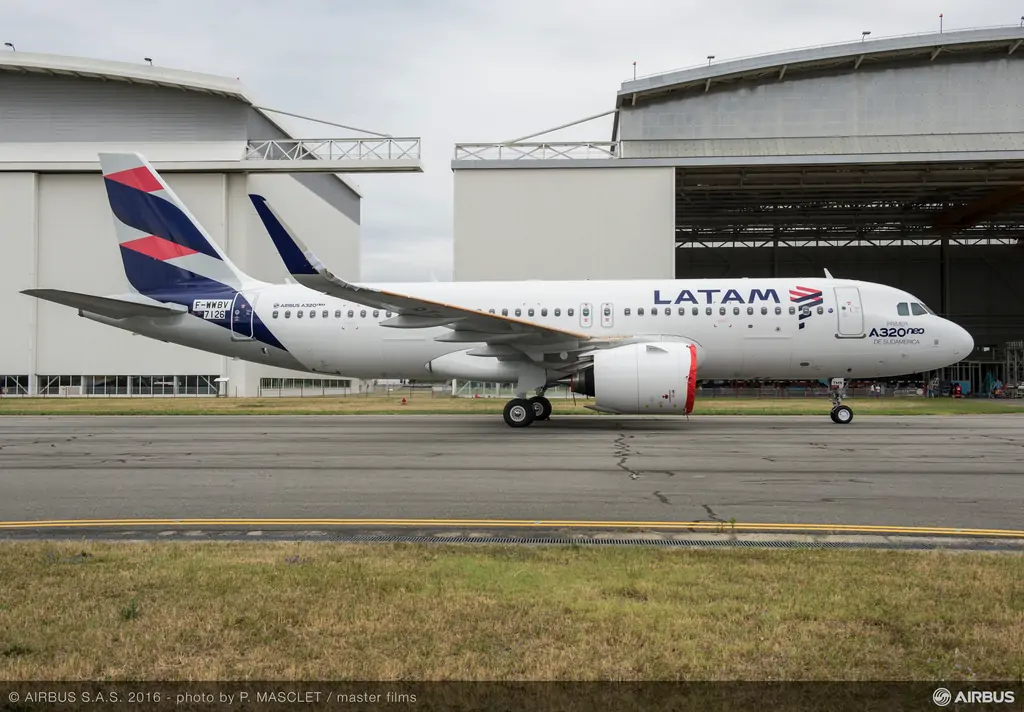
Comment